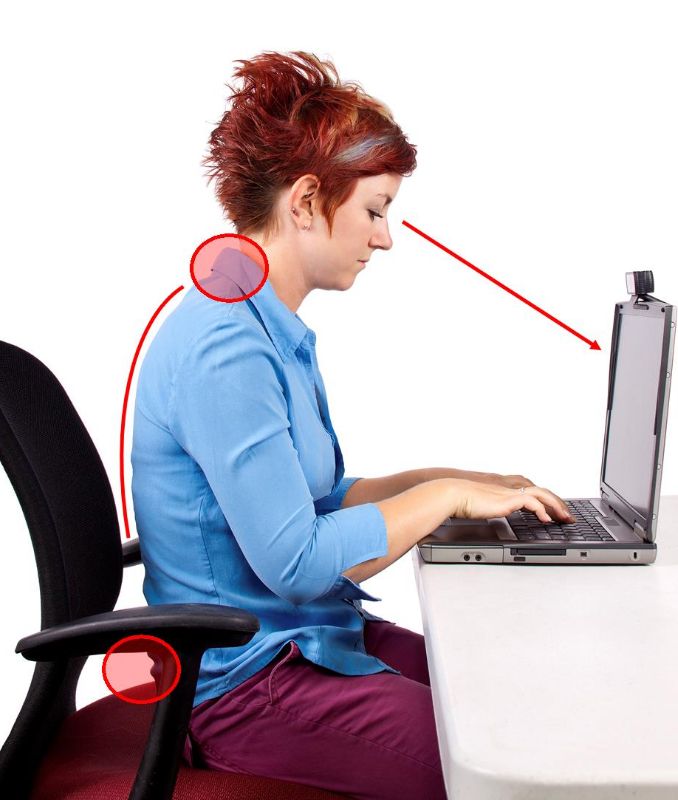Entre em contato
555-555-5555
meuemail@provedor.com
LAPTOPS

The keyboard and monitor do not adjust independently of one another and forces a user to choose between either comfortable hand/wrist or head/neck posture. When used alone on a desk, the laptop forces users to lean forward, away from the backrest of the chair, often with hunched shoulders, reduced lower back support, and contact stress on their forearms and wrists from resting on the front edge of the desktop.

Furthermore, the laptop display is usually too low for most users, which puts additional strain on the neck. The result of these awkward or unhealthy postures may lead to short or long-term discomfort or injury.

